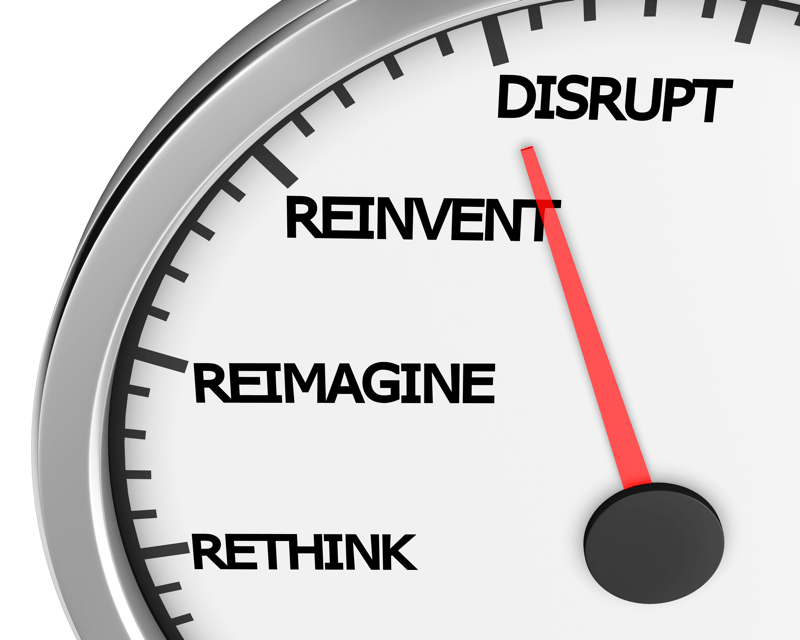
The Digital Age calls for skilled, adaptive leadership
While many have their doubts (and justly so), others see digital as the next business superhero, swooping in to chat flawlessly with your customers when they need support at 3 a.m., discovering how to drop your fleet management costs from 15 cents a mile to three cents per truck, and delivering goods within minutes via drones.
And if you’re in to predicting digital disrupters, “blockchain” was the second top search term overtaking “bitcoin” on the Gartner website in February 2018; the year before it was barely on the radar.
Maybe you’re not sure what to think, and that’s OK, too. But what we know for sure is that with all of its benefits and potential pitfalls, digital will need strong leaders to drive and balance the right results.
Are organizational leaders ready?
Some organizations are ahead of the curve. Companies like PwC have an app for that, as well to lead executives through the steps of assessing their employee base, advancing their knowledge, adding new talent to the pool and accelerating acceptance. But even the folks at ZDNet, known for business technology news, know that digital transformation isn’t an IT challenge alone. Leadership is critical to success, its reporters say. “I would even argue that no leadership means no change and no transformation,” writes Sven Denecken, global vice president of strategy for S4/HANA at SAP.
And yet, PwC’sDigital IQ Survey shows that 60 percent of executives lack skilled teams, 45 percent have slow or inflexible processes, 51 percent lack new data and technology integration and 63 percent use outdated or obsolete technology themselves. It’s a daunting hill to climb, especially when leaders are asking the employees in their company to give up a measure of control in order to keep up with technology advances.
Timeout to discuss pitfalls
With all of its benefits, digital will undoubtedly come with risks that will test even the most capable leaders. (We’ll catch you up here with some quick coverage).
For example, we’re already seeing examples where digital tools and artificial intelligence have run amok.
Take the AI marketing platform called Albert. In some cases, users have tried to control the AI by overriding its suggested algorithms in favor of what they think is best – the human intervention results underperformed the machine when left to its own devices.
The lesson: human judgment must be balanced with trusting the software to do its thing. And experimentation with AI and other digital capabilities like blockchain will be key in truly understanding their performance and results.
This puts another onus on leaders. They must allow for and encourage their teams to test to trust the technology and to understand its impacts, both good and bad.
So, now what?
Now that we’ve considered both sides of the digital coin, we can share some tips to help leaders prepare.
The best place to start, says Denecken, is by recognizing your employees’ value as individuals rather than the job they can do. After all, machines may soon crowd out any one position, but that doesn’t mean it’s in the company’s best interests to simply hand that worker a pink slip and a severance package.
Once you understand people at their contribution level, you have the tools to make the immediate moves this digital transformation demands. Adapt is the new watchword: leaders who model adaptability will help others embrace it as well.
Develop a digital leader mindset
- Build networks to expand capabilities, increase influence and leverage innovation.
- Help your team see their role and contribution in the digital transformation age.
- Give your team members a skills tune-up to be sure they’re ready to operate shoulder to shoulder with the new technology.
- Apply some tried-and-true techniques we examine further below.
The bottom line: senior leaders will be the key drivers of successful integration of digital capabilities that will supercharge the humans who will use it in the future as a business performance enhancer.
Leaders as digital transformers – the tried, true skills still apply
Ironically, it’s an older tried-and-true approach that will steer leaders through these times:
- Establish urgency.
- Assemble a group to lead the change.
- Develop the vision and strategies.
- Communicate the vision and goals.
- Empower action and remove obstacles.
- Generate short-term wins.
- Never let up – continue the change, develop employees and take on new projects.
- Develop the culture.
Recognize these? Yes, they are Harvard professor John Kotter’s eight steps for change management, a familiar process for more than four decades now. Business strategist and futurist Dion Hinchcliffe adds network leadership to the mix as well: using workers, business partners and industry contacts for leverage. “Leading through the network is the only way to tap into broad enough talent, diverse ideas, and local action to accomplish the large scale changes that must be achieved today,” Hinchcliffe writes.
By leaning on a personal network, you can leverage additional talent, apply new technical innovations and quickly adapt your business strategy to digital shifts. To establish this network, however, you need to engage across the organization and both upward and downward by sharing your knowledge and actively empowering your people to change their approaches.
Need a hand getting your leadership skills up to par on these emerging issues? IOCI helps organizations anticipate business trends and prepare their leaders to leverage them.
Plus, learn more about digital transformation in IOCI’s white paper on AI.
Marialane Schultz is the founder of IOCI. She helps individuals and organizations perform at their best, do meaningful work and be impactful through customized coaching and consulting engagements.

